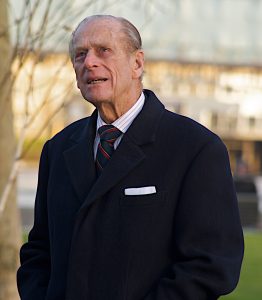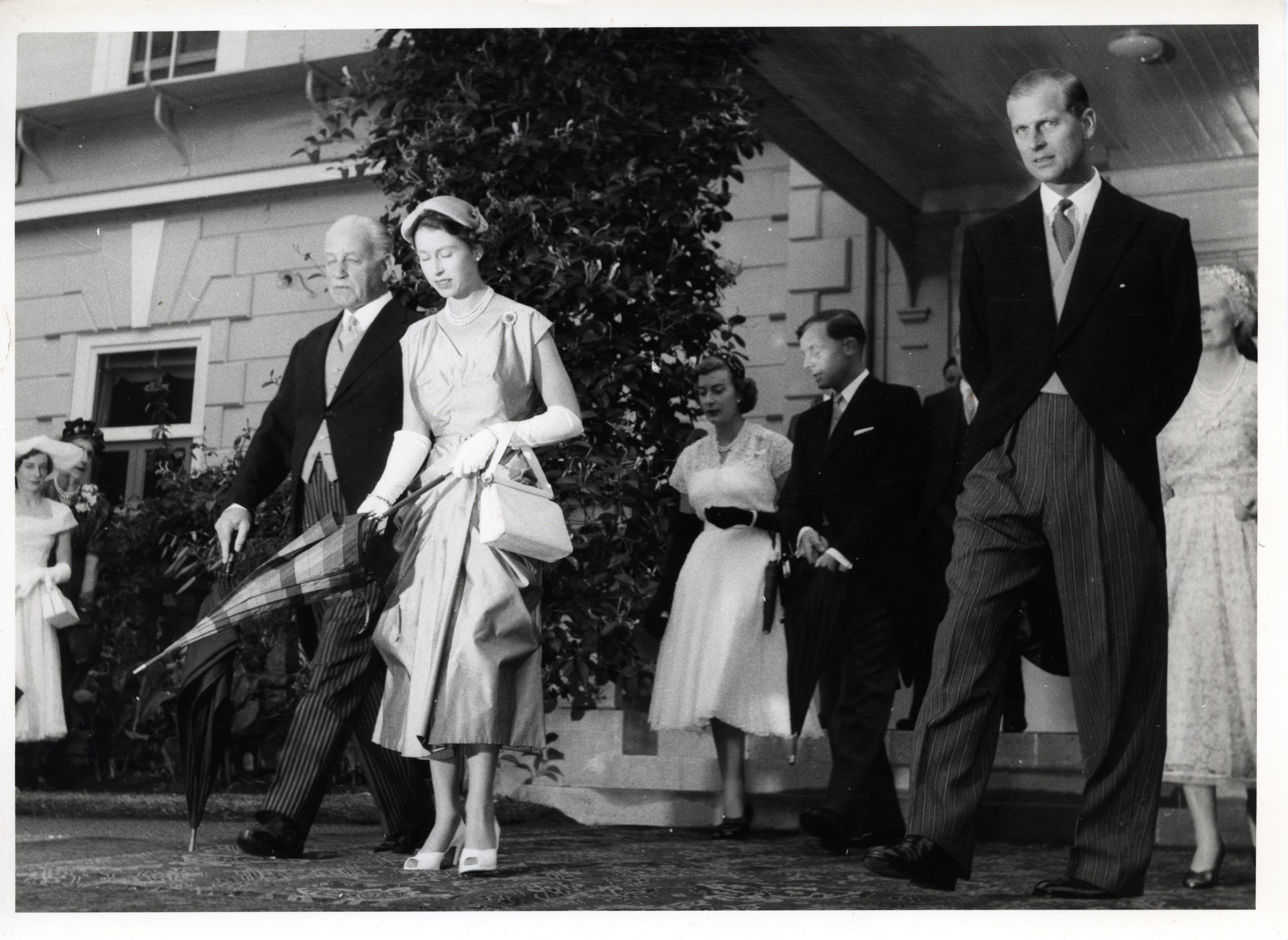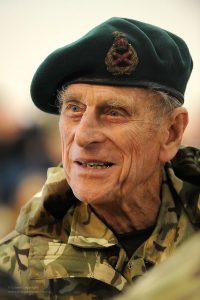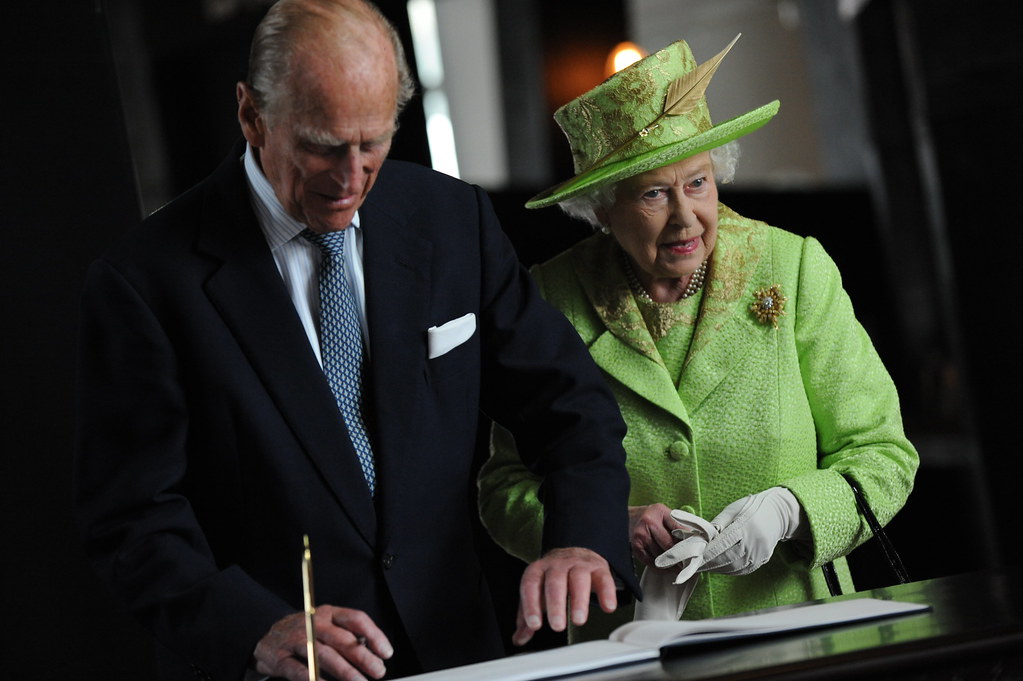Tributes Paid to Prince Philip, Duke of Edinburgh

Today after a short illness Buckingham Palace broke the sad news that Prince Philip, 99, had passed away. His life was one of service and sacrifice as he stood faithfully beside his wife Her Majesty the Queen as together they worked tirelessly for the nation. From his time in the Royal Navy during the Second World War to his recent retirement from Royal duties he has been a tower of strength to the Queen and a model for us all. In those years he has had a long association with Northern Ireland and indeed suffered along with his family from the terrorism which was visited upon our province by Sinn Fein/IRA when they murdered his uncle Lord Mountbatten.
A War Hero
Prince Philip held a number of military titles during his lifetime, as well as his own active naval career, which including being mentioned in dispatches during the Second World War.
He served in the war, first as a midshipman, and worked on board a number of Royal Navy vessels.
In mid-1941, following the Battles of Cape Matapan and Crete, the future Duke of Edinburgh headed to Portsmouth to take a sub-lieutenant exam.
He was subsequently promoted to Sub-Lieutenant and posted to HMS Wallace off the east coast of the UK, before becoming a Lieutenant a few months later, one of the youngest First Lieutenants in the Navy in 1942, taking the post at the age of just 21 while still on board Wallace.
In July 1950, Philip was promoted to Lieutenant Commander and given his first command, HMS Magpie, that September.
Philip would end his active naval career in July 1951, less than a year before Queen Elizabeth II took the throne.
The Duke of Edinburgh, however, was promoted to the rank of commander in the Royal Navy in June 1952.

In 1953, he was given honorary five-star appointments in all three services, being made an Admiral of the Fleet, British Army Field Marshal and Royal Air Force Marshal.
In 2011, he was made Lord High Admiral, the office of titular head of the Navy, succeeding the Queen in the role.
A Life of Service
He has dedicated his life in the service of his adopted country as an officer of the Royal Navy and most notably as consort to HM Queen Elizabeth II over the past 69 years.
He has acted as patron to countless charities and in particular his foundation of the Duke of Edinburgh Award Scheme over 60 years ago has instilled his sense of service to countless young people.We offer our sincere condolences to HM Queen Elizabeth who has lost a husband that she described as ‘my strength and stay. God Save the Queen.
Prince Philip and Northern Ireland
 The Prince has had a long association with Northern Ireland visiting almost 60 times in his sixty years of service. He first came to Northern Ireland in March 1946, accompanying the then Princess Elizabeth, who was officially launching HMS Eagle, then Britain’s largest aircraft carrier, from the Harland & Wolff shipyard. It was the first of 19 visits to Northern Ireland by the couple.
The Prince has had a long association with Northern Ireland visiting almost 60 times in his sixty years of service. He first came to Northern Ireland in March 1946, accompanying the then Princess Elizabeth, who was officially launching HMS Eagle, then Britain’s largest aircraft carrier, from the Harland & Wolff shipyard. It was the first of 19 visits to Northern Ireland by the couple.
Just over three years later, in May 1949, the duke and the heir to the throne were awarded the freedom of Belfast at City Hall. The Duke of Edinburgh famously accompanied the Queen on her Coronation tour, when thousands of Ulstermen, women and children came to greet them, as a special train brought the Royal Couple to many parts of Northern Ireland, including Ballymena and Ballymoney. They returned once more in 1955 when the crowds were even bigger.
On another visit in 1966, as the Royal couple was being driven along Great Victoria Street in Belfast, a concrete block was thrown at the Royal limousine, and it showed for the first time the hostility sections of the nationalist and the Republican communities had for our Royal family. With the onset of the Troubles they became a prime target for the Provisional IRA and their fellow Republican terrorists. When the Queen returned for her silver jubilee by which time the Troubles were at their height security was tight. A bomb exploded at the University of Ulster in Coleraine a week before they were due to visit there, as attempts were made to deter the Royal visit.
Two years later, in 1979 the duke’s uncle and close friend Lord Louis Mountbatten of Burma was murdered by the IRA when they exploded a bomb on his boat at Mullaghmore in County Sligo. This was a real loss to the Prince and his son Prince Charles who counted Lord Mountabatton as the grandfather he had never had. Throughout the Troubles Prince Philip continued undeterred and held a number of honorary ranks in the Armed Forces which again made him a terrorist target. He was a resolute supporter of the Armed Forces and a source of comfort for the families of men from the regiments listed who lost their lives in Northern Ireland. He held the ranks of
Army
Field Marshal of the British Army
Colonel, Grenadier Guards
Colonel-in-Chief, Army Cadet Force
Colonel-in-Chief, Royal Electrical and Mechanical Engineers
Colonel-in-Chief, Intelligence Corps
Colonel-in-Chief, Queen’s Royal Hussars
Colonel-in-Chief, The Rifles
Royal Colonel, The Highlanders, 4th Battalion, The Royal Regiment of Scotland
Colonel-in-Chief, Queen’s Own Highlanders (Seaforth and Camerons)
Honorary Colonel, University of Edinburgh and Heriot-Watt Officer Training Corps
Colonel, Welsh Guards
Honorary Colonel, Leicestershire and Derbyshire Yeomanry
Member, Honourable Artillery Company
Colonel-in-Chief, Queen’s Royal Irish Hussars
Colonel-in-Chief, Duke of Edinburgh’s Royal Regiment (Berkshire and Wiltshire)
Royal Navy
Admiral of the Fleet
Lord High Admiral
Royal Air Force
Marshal of the Royal Air Force
Air Commodore-in-Chief of the Air Training Corps
Honorary Air Commodore of RAF Kinloss
Air Commodore of the Air Squadron
 The Royals continued to visit Northern Ireland, however, and in 1994, the Duke of Edinburgh represented the Queen at a memorial service for victims of the Chinook helicopter crash in Scotland.
The Royals continued to visit Northern Ireland, however, and in 1994, the Duke of Edinburgh represented the Queen at a memorial service for victims of the Chinook helicopter crash in Scotland.
Through the years, thousands of young people from Northern Ireland have also taken part in the Duke of Edinburgh Award scheme, with many of our own members having gained this award in school, church or youth organisations. It will be one of the most enduring legacies of the late Prince.
The Royal couple were back in 1995 to open the new M3 road bridge in Belfast and grant city status on Armagh. The following year the duke agreed to become patron of the Royal Ulster Agricultural Society, which was marking its centenary. In 2007, he attended the enthronement of the new head of the Church of Ireland, Archbishop Alan Harper.
In later years he stood alongside Her Majesty the Queen in some of her most difficult Royal duties as the Royal Family were propelled by political forces into improving diplomatic relations between the United Kingdom and the Republic of Ireland. It was the first visit by a member of the Royal Family to that part of Ireland since it seceded from the United Kingdom, and went on to break the terms of the Treaty which established it as the Irish Free State, becoming a Republic and leaving the Commonwealth some years later. The duke accompanied the Queen on her historic visit to the Republic of Ireland in 2011. Then in the Jubilee visit of 2012 he held his own council about having to meet the IRA commander Martin McGuinness, who had ordered the murder of his uncle and doubtless sanctioned plants to murder him and his family during the Troubles. Commentators, have made much about the prince at one point during the tour of the Lyric Theatre in Belfast, being obviously reluctant to delay and chat to McGuinness. We could only surmise what the straight talking Duke of Edinburgh might have said, and it may not have been far removed from the opinion of many of our own local victims.
The Royal Couple returned in 2014 for a three-day visit and again in 2016, when they undertook a two-day visit. His last visit just before he retired from Royal Duties was in May 2017 when he met 115 young people who completed the Duke of Edinburgh Award scheme.
In what was almost an annual visit to support the troops here during the Troubles, to launch charitable projects or open public buildings or services the Duke showed himself a true friends of the people of the province and will be fondly remembered.
The Imperial Grand Lodge in a mark of respect and tribute to his life and work have asked private lodges to lower the Union Flag on their Orange Halls and homes to half mast until he is buried.
